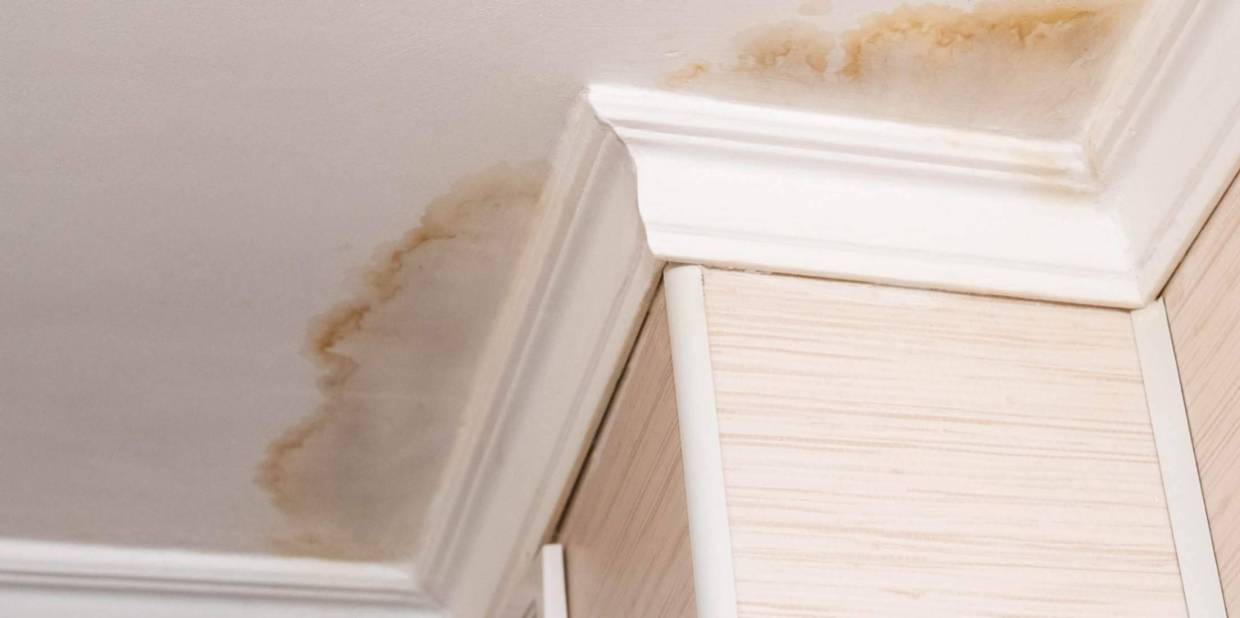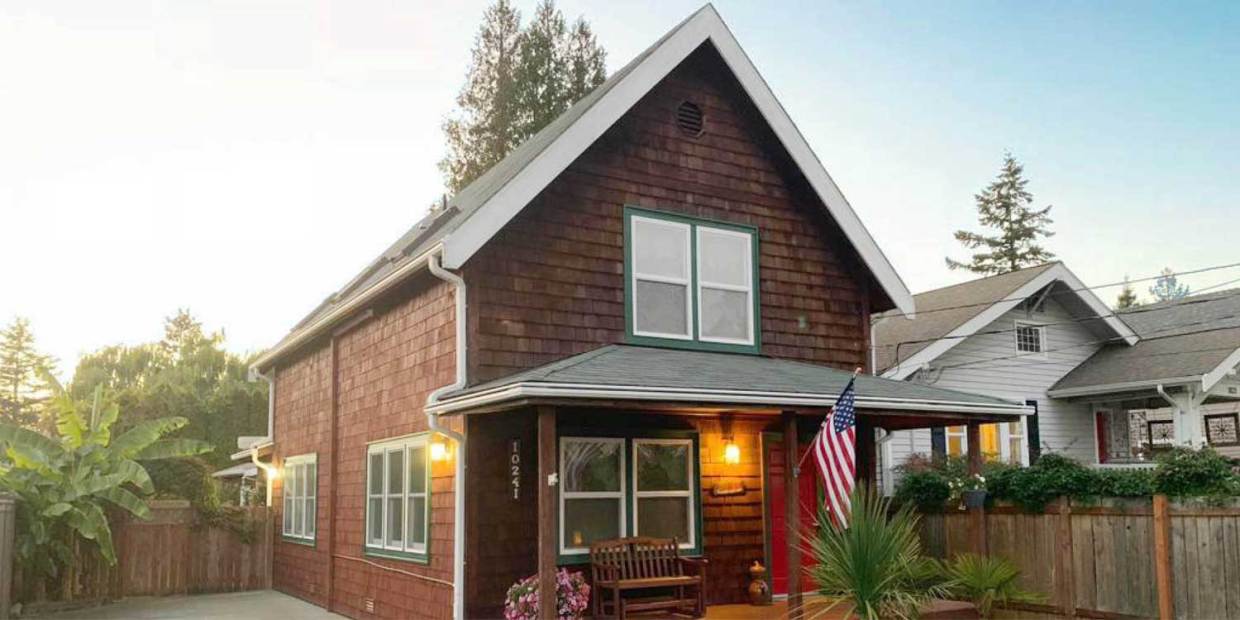Clogged gutters can do much damage outside your home, but did you know they could also cause problems inside your home? Gutter clogs and overflow can cause detrimental leaks in your roof and ceiling and cause unhealthy mold. We’ll show you how gutters cause ceiling leaks and the solutions to prevent them.
The Impact of Roof Leaks on Your Home
One issue that could arise is roof leaks. Gutters are the primary way to collect rainwater from your roof and carry it away from your home. When gutters become clogged with leaves and debris, the water doesn’t drain, starts to pool, and backs up onto the roof. This backup can cause the roof to become heavy with water and lead to roof leaks. It can leak into your attic, but if it is not taken care of quickly, that leak in your attic may become a leak in your ceiling. It may start with a tiny stain or a crack but grow into a bigger problem.
The water may cause the wood on your roof or attic floor to rot, causing structural issues in your home. Wet wood that has sheetrock attached to it will cause damp sheet rock. If the sheetrock remains wet, it will crack and fall apart, leaving you with a hole in your ceiling. Rotten wood and damaged sheetrock will have to be repaired once you take care of the water issue.
What you Need to Know About Clogged Gutters and Ceiling Leaks
If the gutters are clogged, the water doesn’t reach the downspout. It will splash back onto the siding and get into the soffit and fascia. This is what is called Overflow.
Water can cause the fascia to rot and get into your home at the roof line. If enough pools or flows into unprotected areas, it forms water stains on the ceiling. Eventually, if it accumulates enough, the water breaks through the ceiling. Like the roof leaks, the rotted wood fascia will need replacing once the water issues are repaired.
Identifying Mildew and Mold Issues
Once the water starts to pool, mildew and mold will begin to grow. That mildew and mold can permeate your roof, get into your attic, and start growing. Mold is a fungus spore that can quickly enter your home and loves to grow in places with much moisture. Many building products provide the nutrients for molds to grow, such as wood, paper, ceiling tiles, drywall, insulation, and fabrics.
You will know that you have mold by smell or sight. A damp, musty odor is often a clue that you have the beginnings of a mold infestation. Or you can see the mold growing on the surface of your attic roof, attic floor, rafters, or even seeping into the insulation or drywall of your ceiling. Mold comes in different forms and colors, so you could see pink, green, orange, or black colors, indicating you have mold growth.
Mold can cause serious health problems. People with allergies may be more sensitive to molds. People with immune suppression or underlying lung disease are more susceptible to fungal infections. Individuals with chronic respiratory disease (e.g., a chronic obstructive pulmonary disorder, asthma) may have trouble breathing. Individuals with immune suppression are at increased risk for infection from molds. If you or your family members have these conditions, you should consult a doctor for diagnosis and treatment.
It would be best to take care of leaks causing mold growth immediately. Once mold starts growing on insulation and drywall, it can’t be cleaned and needs to be replaced. Hard surfaces can be treated with soap and water, a bleach and water solution, or commercial mold and mildew cleaner. You might want to hire a professional mold remediation company if you have extensive mold.
How Leafguard Can Help Prevent Leaks
Cleaning your gutters can help prevent these issues with water damage to your ceiling. You can climb a ladder to clean your gutters, which is time-consuming and even dangerous, with ladder falls being one of the top injuries seen in Emergency Rooms. You could also pay someone to clean your gutter, but that can get expensive with having it done seasonally.
But even better prevention and protection are Leafguard® gutters.
We know you want the best protection for your home. So why choose Leafguard? It’s simple:
- Leafguard is the premier product in the market today. Our gutters are 20% stronger than the industry standard, and we have received the Good Housekeeping Seal of Approval for the last 18 years straight.
- Our proprietary one-piece design utilizes the simple but powerful principle of liquid adhesion to draw rainwater into the gutter while leaves and all other types of debris roll off. This prevents your gutters from clogging.
- Leafguard gutters are manufactured on-site to the exact specifications to fit your home. Our installers are employees of the company, not subcontractors. They will complete the job and thoroughly clean up to your satisfaction.
- We back up our limited lifetime guarantee**. If you end up having a gutter clog, we will fix it at no charge. And this guarantee is for the product’s life* –which is transferrable if you sell your home.
We feel confident that you will ultimately choose Leafguard over other solutions. We’re proud of our product and stand by it, so you don’t have to worry. Which is why we say Leaf Guard: Get it. And forget it®.
**Guaranteed not to clog, or we will clean your gutters for free.
*Source: CDC


